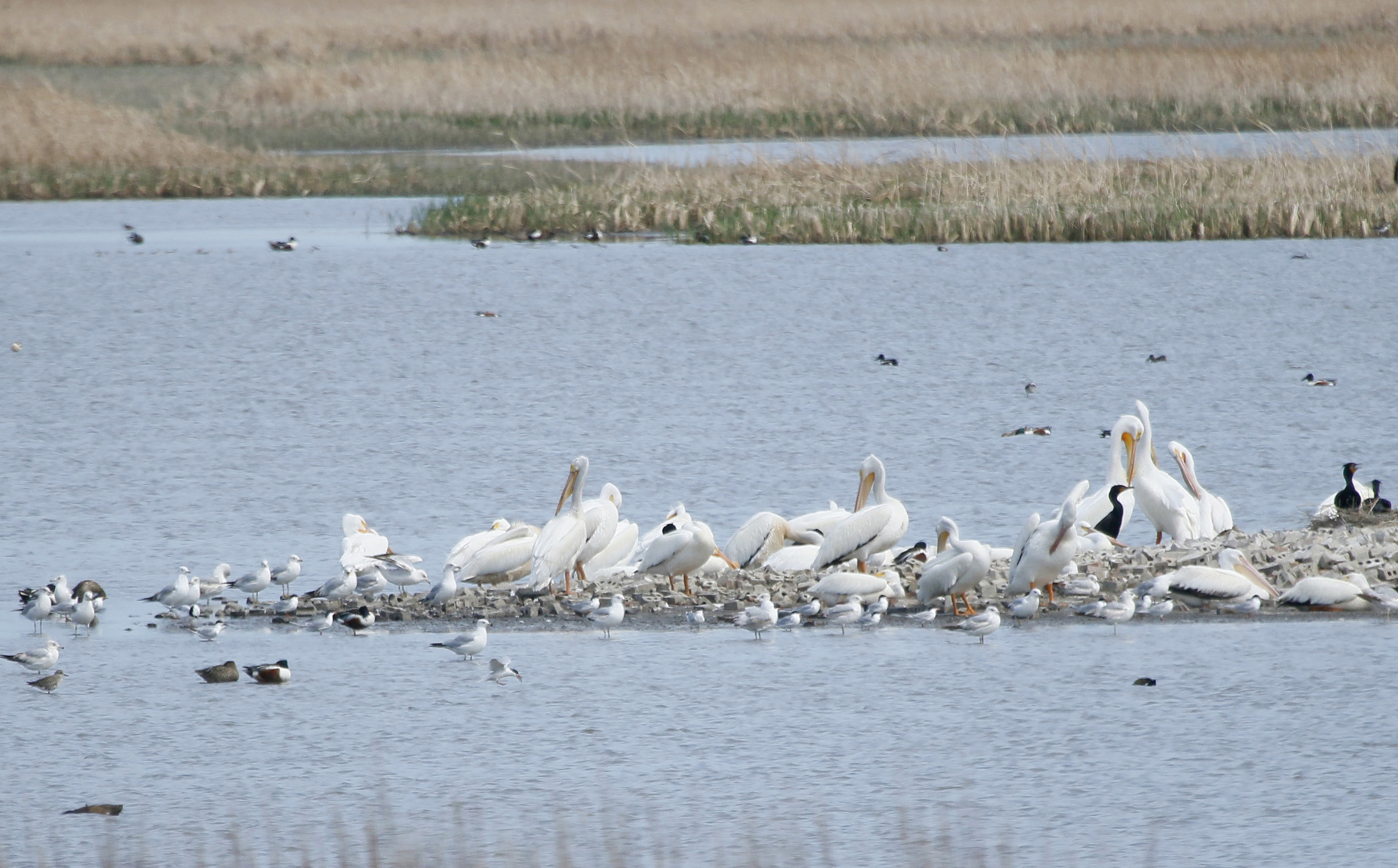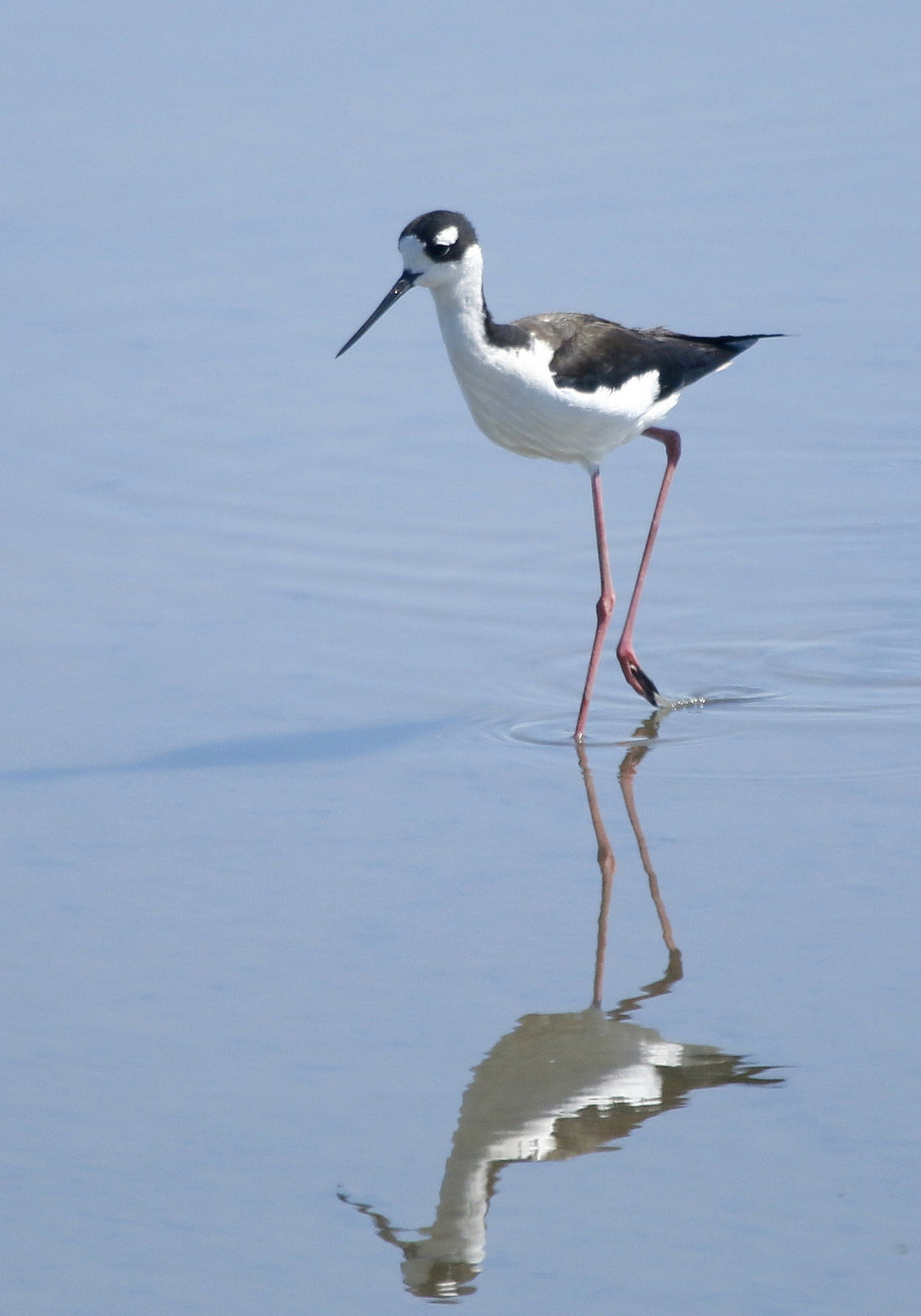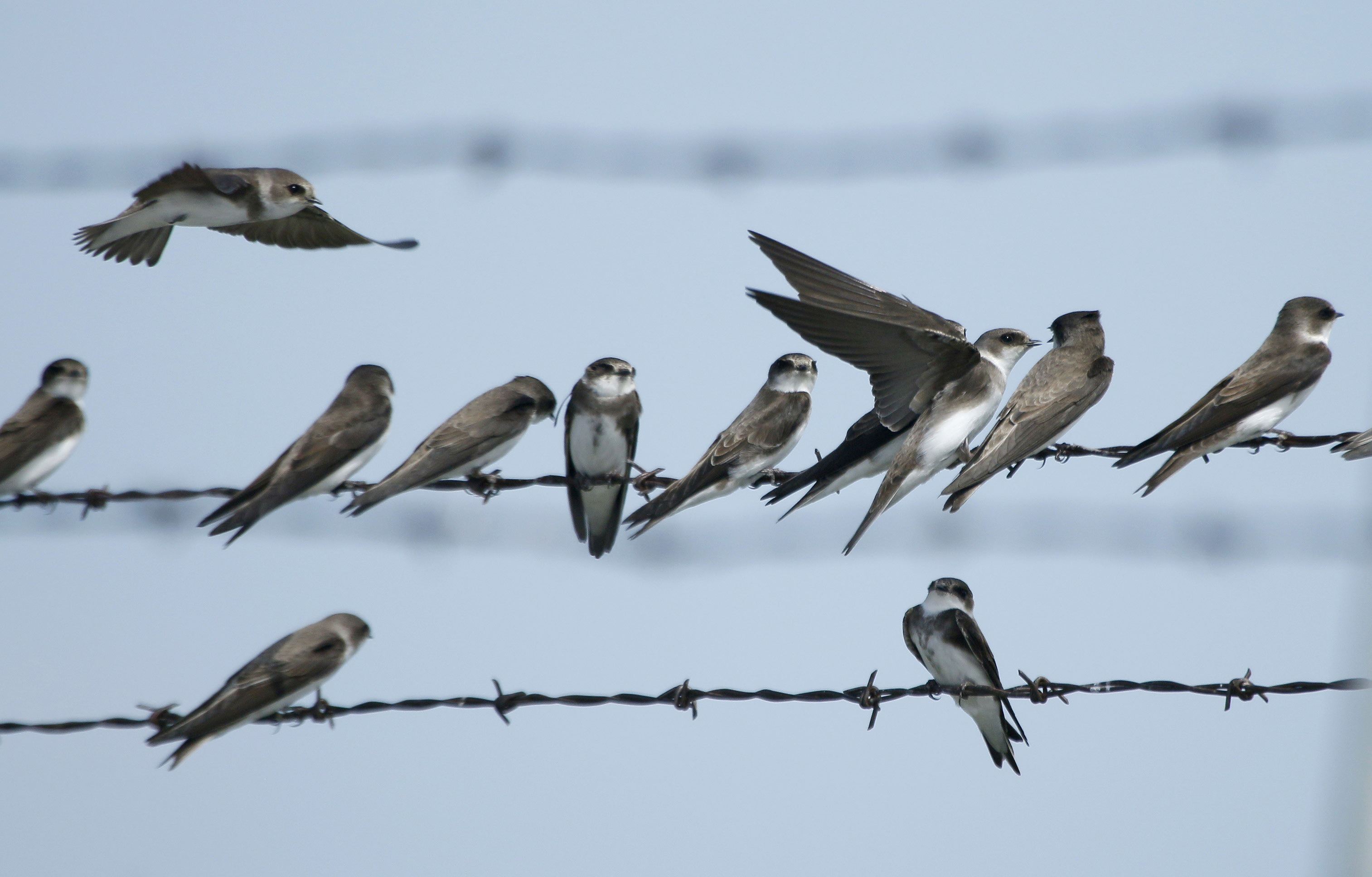The Sandhill crane’s weary wing beats carry him along with the flock, lower and lower, closer to the mud flats where the flock will rest before continuing its migration. The setting sun glints off shallow water, adding a rosy glow to the gray and brown of the crane’s outstretched wings. As the flock banks and descends, the air is filled with the calls of ducks, geese, herons, egrets, and the many shorebirds that are also visiting the marsh to rest and refuel. An incredible forty-five percent of all North American shorebirds arrive at this Kansas marsh, known as Cheyenne Bottoms, each year during their spring and fall migrations. Cheyenne Bottoms, the largest inland marsh in the United States, is vitally important to the survival of many shorebirds. It also brings 60,000 people to the area each year, providing an opportunity for both children and adults to learn about the importance of wetlands and the animals who live there.

American white pelicans, cormorants, gulls and assorted other waterfowl gather on a spit at Cheyenne Bottoms. photos by Kaleb Kroeker unless otherwise noted
Although few would guess it, Kansas contains one of the most crucial shorebird stopping places in the western hemisphere. Each spring tiny western sandpipers, weighing only 0.8 to 1.2 ounces, leave their winter homes in the south to fly from 900 to 2,500 miles to reach their Alaskan breeding grounds. These diminutive sandpipers must be able to find areas of marsh, swamp, or beach where they can rest and store body fat to accomplish their marathon migration. If the birds are unable to find enough food in one spot, they will be forced to stop again. Too much delay will cause the birds to arrive late to their summer breeding grounds. If too much of the short Arctic summer has been wasted, some of the birds may choose not to mate. Since the United States contains only three large shorebird stopping places east of the Rockies, Cheyenne Bottoms is clearly indispensable.
If you visit Cheyenne Bottoms in late October or early November, in addition to seeing many ducks, geese, and various shorebirds, you might be lucky enough to spot an endangered whooping crane. In 1941 these tall white cranes numbered only sixteen. Now there are nearly 300, partly thanks to safe havens like Cheyenne Bottoms. Other protected or endangered species that visit the marsh are the bald eagle, piping plover, and peregrine falcon. The wetlands have been designated as a critical habitat for both whooping cranes and the interior least tern.

A black-necked stilt working the shallows at Cheyenne Bottoms.
Before the arrival of Francisco Coronado, only the native Indian tribes, such as the Cheyenne, after whom Cheyenne Bottoms is named, knew of this place. Although other explorers visited the region, and large numbers of settlers began arriving in Kansas by 1854, it was not until the 1920s that anyone felt moved to find out more about the thousands of birds that arrived at the Bottoms each year.
Frank W. Robl, a farmer from the Ellinwood area, began banding birds at Cheyenne in 1924. He caught birds with nets or traps that would not harm them. Once a bird was caught, he secured a small metal band, containing his contact information, around one of the bird’s legs. He hoped someone, maybe a hunter, would recover the bird and return the band to him, so he could determine how far the banded birds had journeyed. Robl found that the birds he’d banded at Cheyenne Bottoms had flown to Kansas from all over North America.
Robl was astonished at the returns he collected, receiving them from as far away as Alaska, South Carolina, and California, while other birds were recovered in Mexico and Honduras. Beside satisfying his own curiosity, Robl’s work served another purpose. He spoke at the State Wildlife Conference about preserving Cheyenne Bottoms for migrating birds, and when he was offered a few minutes on a national radio program in 1934, he told a million people about the marsh. Others who were interested in creating a wildlife refuge at Cheyenne joined with Robl to testify before the Senate Committee on Wildlife, and he even contacted then-Vice President Charles Curtis. In response to these efforts, Congress promised $350,000 for construction of dikes, roads, and hunting blinds for sportsmen, so Cheyenne Bottoms could be properly managed. However, because of the Depression, only $50,000 were made available. Despite this setback, Robl’s dedicated banding of nearly 19,000 birds over a quarter of a century showed the world how important Cheyenne Bottoms was and helped protect the wetlands for many more generations of birds.
In 1966, Edmund Martinez became interested in banding the birds of Cheyenne Bottoms. Since Robl had banded very few shorebirds, when Martinez began banding birds, only 349 shorebirds had been banded in all North America. Over the next twelve years, Martinez banded over 58,000 birds from 32 species. His northernmost return came from Siberia and his southernmost from Argentina. A 1974 shorebird survey in which Martinez participated found that no other place, from Texas to North Dakota, had even ten percent the number of shorebirds that visited Cheyenne Bottoms. When the data from the two men’s research was combined, it became clear that the wetlands was a vital oasis for migrating birds.
In a New York Times interview, Martinez said: “It’s remarkable what passes through Cheyenne Bottoms, sandpipers that winter in Tierra del Fuego and breed in Siberia. I got to hold them in my hand and marvel at how they do it. To get returns on birds that I banded from northern Russia and South America, it really put into perspective what is going on here in the center of Kansas. These small birds are the best athletes in the world.” (Laux).
Not only does Cheyenne Bottoms provide shelter and food for many animals, it also draws many people to Kansas, opens a door for people to learn about this very special wetland ecosystem, and brings $2.8 million into the state’s economy annually. Each year, 60,000 people visit Cheyenne Bottoms, some drawn by the Wings n’ Wetlands birding festival which is held every other year at the marsh. Visitors to Cheyenne Bottoms can hike on a nature trail, listen to guided tours, and explore displays inside a Wetlands Education Center.
Cheyenne Bottoms is an essential link in the yearly migration for tens
of thousands of birds. Without the dedicated work of Frank Robl and
Edmund Martinez who showed the world how significant this Kansas marsh
is to the survival of many North American shorebirds, this might not be
the case. Robel and Martinez, who invested their lives in studying,
understanding, and protecting Cheyenne Bottoms, have made it possible
for us to visit the marsh, see the sun sparkle on the shallow water,
hear the raucous calling of geese, and crane our necks to see flocks of
thousands wheel in the sky. We can marvel at their migration journey and
should do what we can to ensure that the waypoint they rely on will
always be here to welcome them.

Bank swallows at Cheyenne Bottoms.

